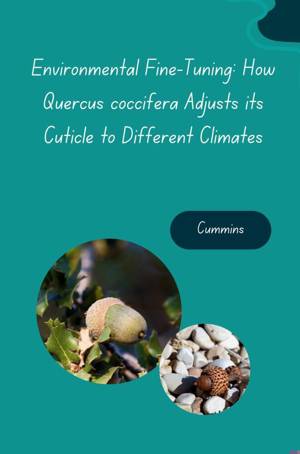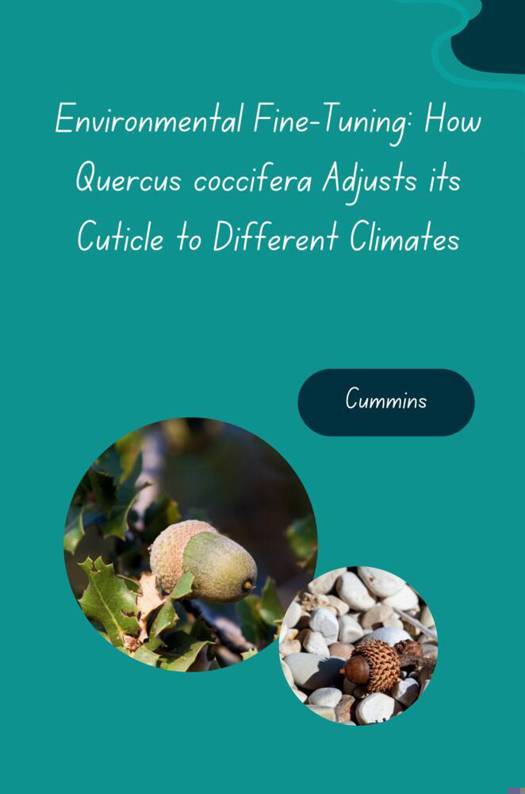
- Afhalen na 1 uur in een winkel met voorraad
- Gratis thuislevering in België vanaf € 30
- Ruim aanbod met 7 miljoen producten
- Afhalen na 1 uur in een winkel met voorraad
- Gratis thuislevering in België vanaf € 30
- Ruim aanbod met 7 miljoen producten
Zoeken
Environmental Fine-Tuning
How Quercus coccifera Adjusts its Cuticle to Different Climates
Cummins
Paperback | Engels
€ 28,45
+ 56 punten
Omschrijving
The Mediterranean basin is characterized by a mosaic of climates, ranging from hot and dry summers with mild winters to areas with colder winters and more evenly distributed precipitation. Quercus coccifera, a keystone evergreen shrub or small tree, is a dominant species across this region. Its success can be attributed to several factors, including its sclerophyllous leaves with a well-developed cuticle. The cuticle is a vital structure composed of cutin (a biopolymer) and embedded waxes. It plays a crucial role in regulating water loss, gas exchange, and defense against pathogens. Understanding how Quercus coccifera adjusts its cuticle to different climates provides valuable insights into plant adaptation strategies. Impact of Temperature on Cuticle Composition: Studies have shown that Quercus coccifera modifies its cuticle composition in response to temperature variations. In hotter and drier regions, the cuticle exhibits a higher concentration of cutin and specific waxes. Cutin is a strong hydrophobic (water-repellent) molecule, and increased cutin content reduces water permeability, thereby minimizing water loss through transpiration. Additionally, specific waxes, like long-chain alkanes, further enhance the hydrophobic properties of the cuticle, creating a more effective barrier against water loss.
Specificaties
Betrokkenen
- Auteur(s):
- Uitgeverij:
Inhoud
- Aantal bladzijden:
- 124
- Taal:
- Engels
Eigenschappen
- Productcode (EAN):
- 9783384273567
- Verschijningsdatum:
- 27/06/2024
- Uitvoering:
- Paperback
- Formaat:
- Trade paperback (VS)
- Afmetingen:
- 152 mm x 229 mm
- Gewicht:
- 190 g

Alleen bij Standaard Boekhandel
+ 56 punten op je klantenkaart van Standaard Boekhandel
Beoordelingen
We publiceren alleen reviews die voldoen aan de voorwaarden voor reviews. Bekijk onze voorwaarden voor reviews.











